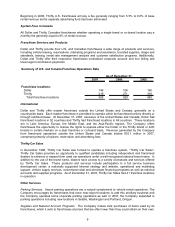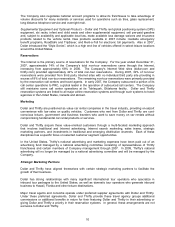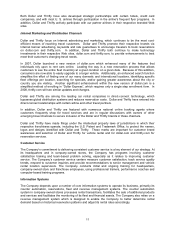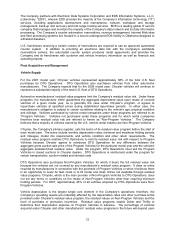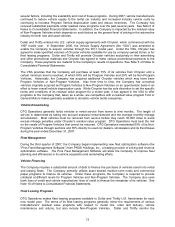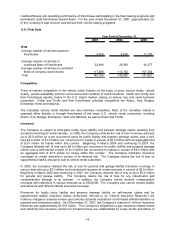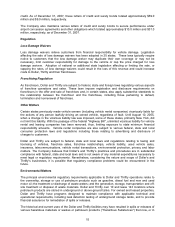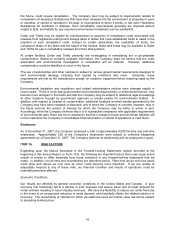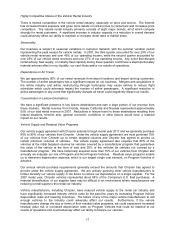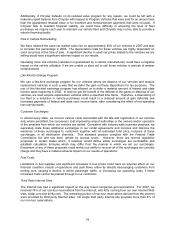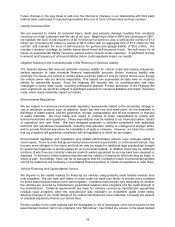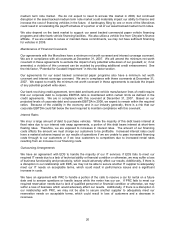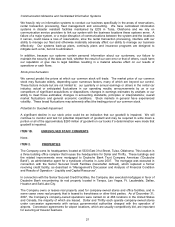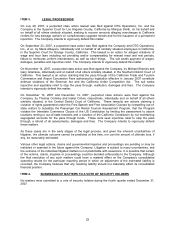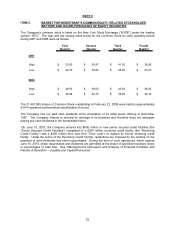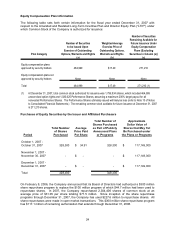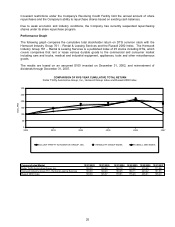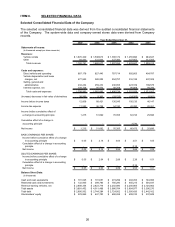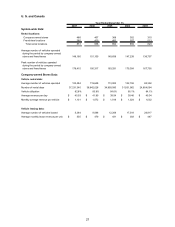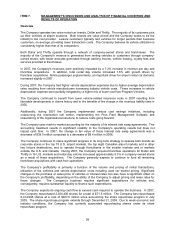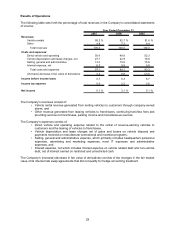Thrifty Car Rental 2007 Annual Report Download - page 27
Download and view the complete annual report
Please find page 27 of the 2007 Thrifty Car Rental annual report below. You can navigate through the pages in the report by either clicking on the pages listed below, or by using the keyword search tool below to find specific information within the annual report.Future changes in the way travel is sold over the Internet or changes in our relationship with third party
Internet sites could result in reduced reservations from one or more of these sites and less revenue.
Liability Insurance Risk
We are exposed to claims for personal injury, death and property damage resulting from accidents
involving our rental customers and the use of our cars. Beginning in March 2006 and continuing in 2007,
we maintain the level of self-insurance of $4.0 million per occurrence, plus a self-insured corridor of $1.0
million per occurrence for losses in excess of $4.0 million with an aggregate limit of $7.0 million for this
corridor, and maintain the level of self-insurance for general and garage liability of $5.0 million. We
maintain insurance coverage for liability claims above these self-insurance levels. We self-insure for all
losses on supplemental liability insurance policies sold to vehicle rental customers. A significant change
in amount and frequency of uninsured liability claims could negatively impact our results.
Litigation Relating to the Constitutionality of the Removal of Vicarious Liability
The federal Highway Bill removed unlimited vicarious liability for vehicle rental and leasing companies,
limiting exposure to state minimum financial responsibility amounts. Before vicarious liability was
removed, the owner of a vehicle in certain states would be liable for acts by vehicle drivers even though
the vehicle owner was not directly responsible. This federal law supersedes all state laws on vicarious
liability for automobile lessors. Since the Highway Bill became law, its constitutionality has been
challenged in some state courts, including subsequent appeals. If these provisions of the Highway Bill
were overturned, we would be subject to significant exposure to insurance liabilities and higher insurance
costs, which would materially impact our results.
Environmental Regulations
We are subject to numerous environmental regulatory requirements related to the ownership, storage or
use of petroleum products such as gasoline, diesel fuel and new and used motor oil; the treatment or
discharge of waste waters; and the generation, storage, transportation and off-site treatment or disposal
of waste materials. We have made, and expect to continue to make, expenditures to comply with
environmental laws and regulations. These expenditures may be material to our financial position, results
of operations and cash flows. We have designed programs to maintain compliance with applicable
technical and operational requirements, including leak detection testing of underground storage tanks,
and to provide financial assurance for remediation of spills or releases. However, we cannot be certain
that our programs will guarantee compliance with all regulations to which we are subject.
Environmental legislation and regulations and related administrative policies have changed rapidly in
recent years. There is a risk that governmental environmental requirements, or enforcement thereof, may
become more stringent in the future and that we may be subject to additional legal proceedings brought
by government agencies or private parties for environmental matters. In addition, there may be additional
locations of which we are currently unaware at which wastes generated by us may have been released or
disposed. In the future, these locations may become the subject of cleanup for which we may be liable, in
whole or part. Accordingly, there can be no assurance that the Company’s future environmental liabilities
will not be material to the Company’s consolidated financial position or results of operations or cash flows.
Vehicle Financing and Capital Market Access
We depend on the capital markets for financing our vehicles using primarily asset backed medium term
note programs. We use cash and letters of credit under our bank loan facility to provide more collateral
for these asset backed medium term note programs. Collateral requirements vary depending on whether
the vehicles are covered by manufacturer guaranteed residual value programs and the credit strength of
the manufacturer. Collateral requirements are lower for vehicles covered by manufacturer guaranteed
residual value programs when the manufacturer also maintains an investment grade credit rating.
Adverse changes to the credit ratings of the related manufacturers have materially increased the amount
of collateral required to finance our vehicle fleet.
Recent volatility in the credit markets and the downgrade or risk of downgrade of the bond insurers for the
asset backed medium term note programs (the “Monolines”) has limited the access to the asset backed
19


